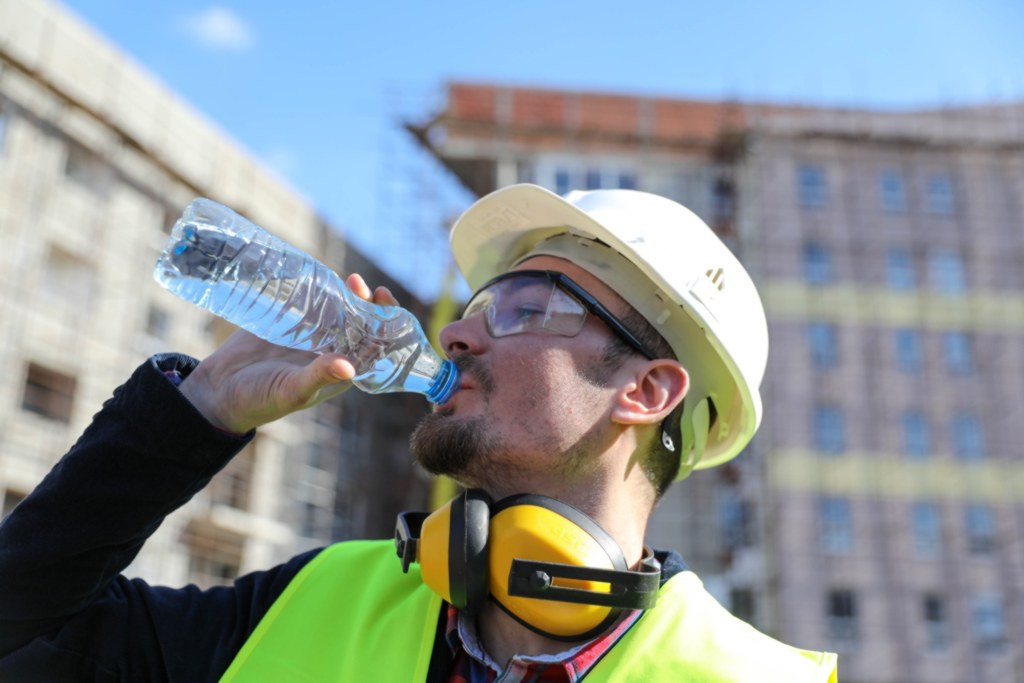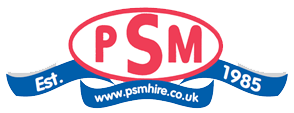
Construction sites are notorious for their harsh conditions. Being exposed to the elements means that workers have to suffer cold and wet weather in the winter and endure scorching temperatures in the summer. The British Government does not set any upper or lower temperature limits for workers, although the government’s website does stress that we should take worker comfort into account at all times and puts forward six factors that affect thermal comfort and improve hot weather construction site safety:
Environmental factors:
- Air temperature (the general temperature of a room or place)
- Radiant temperature (the temperature emitted by a heat source present in the environment)
- Air velocity (a draft, breeze or wind that affects temperature by cooling)
- Humidity (environments with reactive humidity above 80% prevent the evaporation of sweat from the skin, which is the main biological method of cooling)
Personal factors:
- Clothing Insulation (body heat trapped by different types of clothing)
- Metabolic heat (the heat generated by the body)
 HEAT STRESS: RECOGNISING THE CONDITIONS
HEAT STRESS: RECOGNISING THE CONDITIONS
Heat stress is not a medical condition itself, but an umbrella term that encompasses several conditions caused by excessive heat exposure. As the weather gets warmer, it’s extremely important for everyone working on a building site to be aware of hot weather construction site safety practices and be vigilant of signs of heat stress in themselves and others.
Temperature related ailments can be especially dangerous as a key symptom can be drowsiness, making the sufferer less aware of their surroundings and their physical incapacity. It is important for workers to be trained in detecting heat stress in themselves and in coworkers. For this purpose, we will list the most common heat related conditions to look out for on site in summer:
Prickly Heat or Heat Rash (Miliaria Rubra)
Heat rash is skin condition characterised by a blotchy rash with slightly elevated bumps on the skin. It can be extremely itchy and is caused by sweat accumulating under the skin and being unable to evaporate. As soon as heat rash is detected, the affected worker must abandon the hot environment. Treatments for heat rash include cool showers and keeping the skin clean, cool and dry to avoid infection. Heat rash normally subsides after a few days.
Sunburn
Most of us are familiar with sunburn and have suffered from it. Sunburn is characterised by red, irritated and painful skin and is caused by excessive exposure to UV rays. The symptoms of sunburn usually appear a few hours after exposure. To ease sunburn, keep the skin cool and moisturised and avoid further exposure to the sun until the condition subsides.
Dehydration
Apart from the obvious thirst and discomfort, severe dehydration can have a serious of consequences including electrolyte imbalance, headaches, drowsiness and low blood pressure. To avoid dehydration, drink plenty of fluids, especially water or isotonic beverages. Avoid beverages containing alcohol or caffeine as they have a dehydrating effect.
Heat Cramps
Excessive heat exposure and/or overexertion can cause intense sweating, leading the body to lose salts and moisture through perspiration. Heat cramps are spasms in large muscles, typically the abdomen, back, arms or legs, and are caused by the body losing fluids and salts at a faster rate than they can be replenished.The painful spasms are often accompanied by hardened lumps in the muscles. Anyone suffering from heat cramps should immediately stop carrying out any physically strenuous activity, sit down somewhere cool and rehydrate with water or isotonic beverages. As they begin to recover they should stretch and massage the affected muscles and rest for several hours until symptoms have subsided.
Heat Exhaustion
Heat exhaustion occurs when the body is exposed to high temperatures over a prolonged period and begins to experience difficulty in temperature regulation. This is the preliminary stage of heat stroke.Symptoms include: high temperature, weakness, excessive sweating, headaches, nausea or vomiting, fatigue, muscle cramps, rapid and weak heartbeat and fainting.
If one of your colleagues is showing signs of heat exhaustion, move them quickly to a cool area and help them cool down by loosening or removing clothing, providing drinks, wet flannels or any other means you have at hand to help them cool down. Be vigilant that the condition doesn’t worsen, as it may lead to heat stroke which is a medical emergency requiring immediate treatment. Symptoms should subside substantially within half an hour of treatment.
Heatstroke
Heatstroke originates from exposure to excessive heat, causing the body to reach a core temperature of 40 degrees celsius. This is the point at which the body is no longer able to regulate its temperature. Symptoms include: high body temperature, headaches, fainting, seizures, nausea and vomiting, confusion, delirium, dizziness and impaired coordination, nausea and vomiting.
Heat stroke is a serious medical condition. If you suspect that a colleague is displaying symptoms of heat stroke, contact the emergency services immediately, then move this person to a cool place. While you wait for an ambulance to arrive attempt to cool your colleague down by any means available (cold showers or hosing down, applying cool flannels or water soaked garments, etc). Ice packs can be used, although be careful to not apply ice directly to the skin if possible, as this will cause cold burns. If your colleague is conscious, provide them with cold drinks to rehydrate them.
HEAT STRESS PREVENTION
It is important for all construction companies to carry out hot weather construction site safety training and have PPE and safety procedures in place to ensure that all workers are as comfortable as possible when working during the warm summer months. Construction site heat stress prevention plans should be based on an analysis of the particular hazards of each job and site. The contracting company is responsible for providing all necessary PPE and welfare facilities necessary for employees working under said conditions as well as for designing work schedules that minimise the impact of hot temperatures on their workers.
If you are hiring plant, tools or access equipment for your summer construction project, speak to your plant hire firm about specific dangers of working in the summer heat and about any resources they may be able to provide.
At PSM Hire we are plant and tool hire specialists, stocking a wide range of equipment for construction projects of all types. As well as tools and plant we stock a range of site welfare equipment and facilities. With a wealth of knowledge in the industry, we are always happy to discuss hot weather construction site safety with our clients in order to provide the most suitable equipment and solutions for working in the hot weather. Call us today on 02088505658. We look forward to hearing from you.
https://www.hse.gov.uk/news/workplace-temperature.htm
